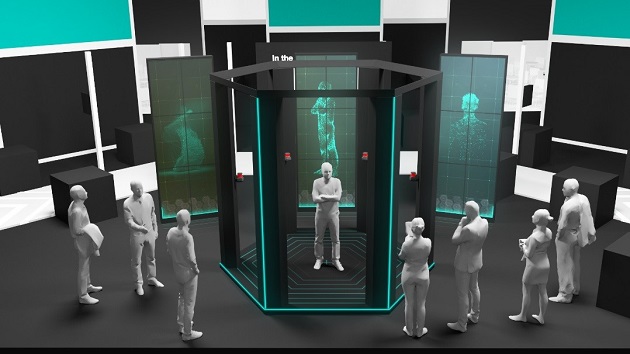At the Pepperl+Fuchs stand, visitors to Hannover Messe can view their likeness as a digital image and experience production in lot size one. Visitors can scan themselves in 3-D and have the image printed on the front page of a trade fair magazine. With the help of a digital twin, the production process on a sheet metal bending machine will be simulated and the results used live for optimization in response to the differing properties of various raw materials.
As part of its “Solutions Park”, Pepperl+Fuchs is presenting two new exhibits at the trade fair, in which integrated processes in line with Industry 4.0 standards will be demonstrated in real time.
With the company’s “Connected Customization” concept, production in lot size one can be experienced at first hand: Visitors at the trade fair will be scanned in 3-D from head to toe by six 2-D LiDAR sensors from the R2000 series. The contour data will then be available in a standard data format for further processing across the world on the NeoNeon cloud run by Neoception, a subsidiary of Pepperl+Fuchs. At the show, the data will be converted into an image and printed onto the cover of a personalized trade fair magazine, but it can also be used as the basis for producing a 3-D image anywhere in the world.
With the “Digital Twin” concept, visitors to the stand can configure their chosen product from a piece of sheet metal. As part of the demonstration, the data will be transferred to one of Austrian manufacturer Salvagnini’s sheet metal bending machines, which will immediately start production of the individual product.
To make this possible in lot size one without bending tests, the process must be optimized for each batch of material since the bending properties of sheet metal can vary significantly. To do this, the behavior of the actual metal sheet is analyzed at the beginning of the bending process and aligned with a digital twin of the metal and the bending machine developed by the Linz Center of Manufacturing (LCM). The adjustment parameters are then calculated and transferred to the machine during the on-going bending process.
The machine is equipped with inductive positioning systems and ultrasonic sensors made by Pepperl+Fuchs. For quality control purposes, the contour of the finished product is checked with a light section sensor from the SmartRunner Matcher series.









